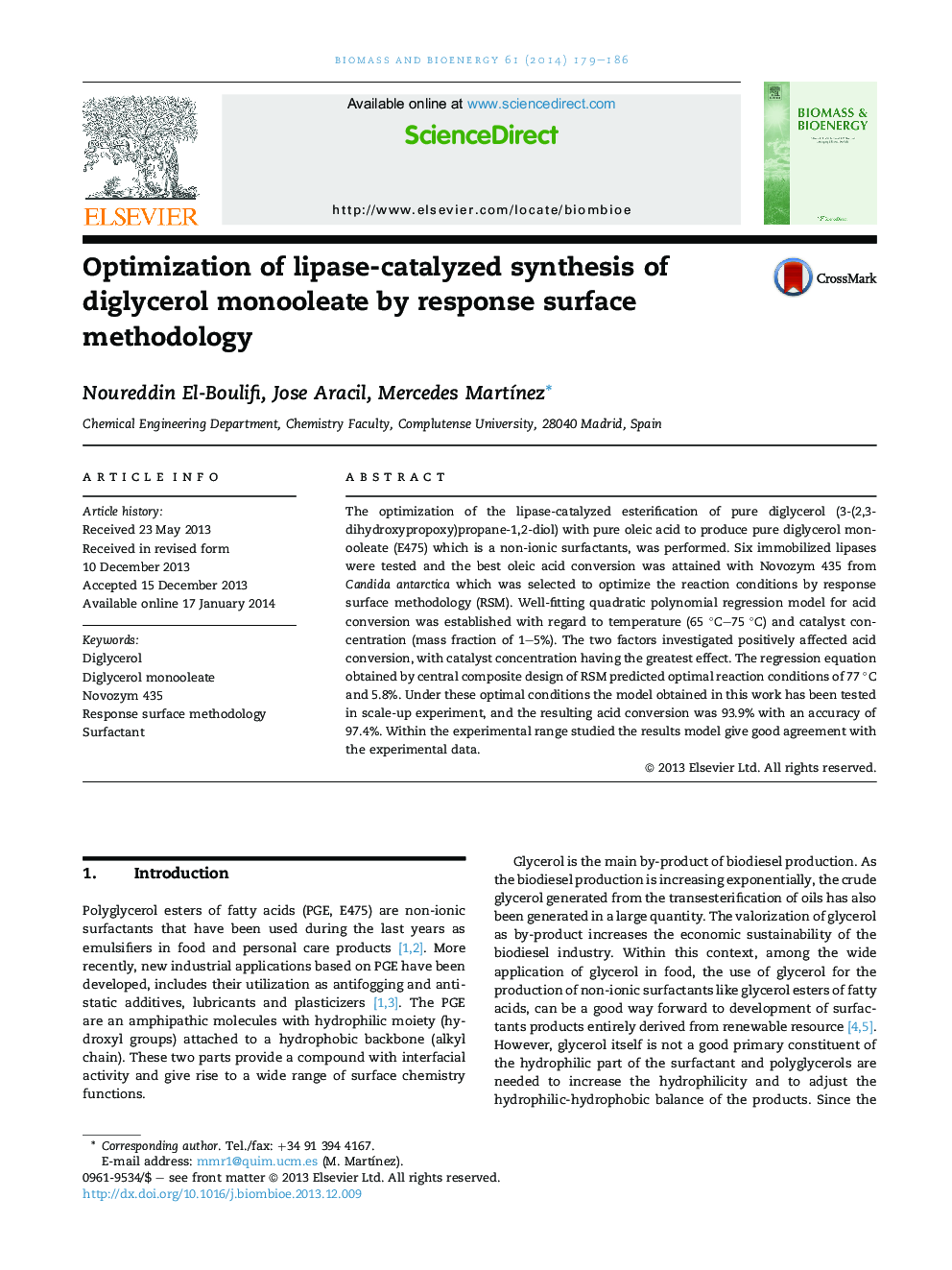| Article ID | Journal | Published Year | Pages | File Type |
|---|---|---|---|---|
| 676959 | Biomass and Bioenergy | 2014 | 8 Pages |
•Lipase-catalyzed esterification of pure diglycerol with oleic in solvent-free system.•The modeling and optimization of lipase-catalyzed esterification process was successfully performed.•Under optimal conditions, the esterification process was scaled up using a stirred tank reactor.
The optimization of the lipase-catalyzed esterification of pure diglycerol (3-(2,3-dihydroxypropoxy)propane-1,2-diol) with pure oleic acid to produce pure diglycerol monooleate (E475) which is a non-ionic surfactants, was performed. Six immobilized lipases were tested and the best oleic acid conversion was attained with Novozym 435 from Candida antarctica which was selected to optimize the reaction conditions by response surface methodology (RSM). Well-fitting quadratic polynomial regression model for acid conversion was established with regard to temperature (65 °C–75 °C) and catalyst concentration (mass fraction of 1–5%). The two factors investigated positively affected acid conversion, with catalyst concentration having the greatest effect. The regression equation obtained by central composite design of RSM predicted optimal reaction conditions of 77 °C and 5.8%. Under these optimal conditions the model obtained in this work has been tested in scale-up experiment, and the resulting acid conversion was 93.9% with an accuracy of 97.4%. Within the experimental range studied the results model give good agreement with the experimental data.
